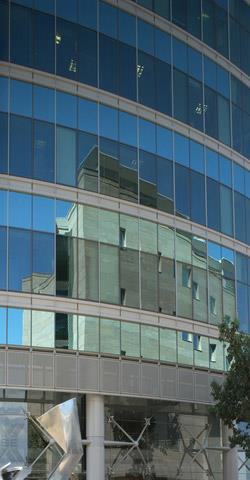Although volatility in the bonds market may have caused suffering for South Africa’s listed property sector weeks ago, there are still opportunities for investors thanks to higher yields and sound market fundamentals.

The listed property sector has grown from R61 billion at the end of the first half of 2003 to R328 billion at end of June 2013.
According to the SA Real Estate Investment Trust (REIT), listed property prices decreased by 19 percent between 17 May and 24 June this year, something analysts say was a re-pricing in the face of changing global market dynamics.
The appeal of listed property is that it provides both a steady income stream and capital growth over time, says the organisation.
Keillen Ndlovu, head of listed property funds at STANLIB, says listed property prices have changed but the fundamental story hasn’t.
“We are still comfortable with our income growth outlook of about 7 percent over the next two years.”
Ndlovu notes that the listed property sector has seen this type of volatility before - with a decrease of 26 percent between May and July 2006 and a 37 percent decrease between November 2007 and June 2008.
“Listed property markets have fallen dramatically before – in 2006 and 2008 – but they came back over time. Why? The fundamentals were in place and the income was still growing,”
Listed property income and bonds
Ndlovu says despite the volatility, the listed property sector is still the best performing class.
“It has performed better than equities, cash and bonds over the last 6 months ending June 2013.”
Ndlovu points out that income is fairly stable and capital can be volatile. So listed property prices have changed but the market fundamentals have not.
Bonds and listed property both generate income for investors, which is why they are closely correlated.
So when bond yields increase, listed property prices decline.

Keillen Ndlovu, head of listed property funds at STANLIB says despite the volatility, the listed property sector is still the best performing class.
“It’s important to note that in the medium- to long-term listed property is a better bet compared to bonds, because it offers growing income whereas bonds do not,” he says.
Asked about his expectations for the sector in the next six months, he explains that it is difficult as six months is too short a period.
However, he says short-term total returns are likely to be driven by income rather than capital given the higher bond yields outlook.
“Over the next 4 years we believe that annualised total returns of 10 and 12 percent are possible,” he says.
Estienne de Klerk, SA REIT regulation and taxation committee chairman and executive director of Growthpoint Properties says, currently, average yields in the sector are about 7.3 percent and most listed property companies are expected to grow distributions between 4 and 12 percent.
“While a longer term change in bond yields could have a negative impact on the price of listed property stocks, property fundamentals remain solid.”
Capital raising and listings
The sector has already raised more than R10 billion in capital this year, from existing companies and funds (mainly through private placement and rights issues), mostly from existing listed property counters).

Ndlovu says the listed property sector has performed better than equities, cash and bonds over the last 6 months ending June 2013 as illustrated in the chart.
“All the equity raisings have been successful – and most have been oversubscribed,” says Ndlovu.
Analysts expect several new listings to take place before the year is over.
As for new listings, he says there have been positive inflows into the sector pointing out that listed property is widely accepted as a separate class.
Ndlovu says there are two to three sizeable listings that are earmarked for September and October, however, fund managers are becoming more cautious especially after the recent volatility.
“As long as the new listings are priced appropriately, and have the right strategies, good management and portfolios, the market will consider investing in them,” says Ndlovu.
He says new listings they have seen over the last two years or so have created a more dynamic sector with a bigger size, more choice and better liquidity.

The Johannesburg Stock Exchange now boasts 45 listed property companies accounting for 3.8 percent of its overall market capitalisation.
On 19 July, Tower Property Fund made its debut on the Johannesburg Stock Exchange (JSE) becoming the first property fund to list on the JSE under the REIT structure.
The JSE’s listed property sector has seen 16 companies come to the market in the past three years including international fund Go Global Properties which listed this past May.
Although other funds have converted to the new REIT structure, Tower Property Fund was the first new fund to list as a REIT.
Launched by Spire Property Group, Tower Property Fund’s property portfolio consists of 27 properties valued at R1.65 billion.
These are located in Cape Town, KwaZulu-Natal and Gauteng, some of the properties include the Cape Quarter in Cape Town, Coachman’s Crossing Bryanston and Constantia View in Cape Town.
Marc Edwards, chief executive officer of Tower Property Fund, says they are excited to list on the JSE’s Main Board.
“We offer investors a sustainable, growing source of income and aim to differentiate the fund from its peers through an active strategy of ‘greening’ properties over time.
“This focus will initially be on reducing energy costs and will make our buildings more competitive.”
Edwards says they believe green initiatives such as Green Building Council accreditation will become increasingly more important to the marketplace.
Spire Property Group listed Paramount Property Fund, which grew to R3.5 billion when it was sold to Growthpoint Properties in 2006.
“We are very pleased to welcome another established property player, Tower Property Fund, on to the JSE,” says Zeona Jacobs, director of Issuer and Investor Relations at the JSE.
Jacobs explains that the sector has enjoyed tremendous growth in the past 10 years and is one that South African investors understand well.
The sector has grown from R61 billion at the end of first half of 2003 to R328 billion at end of June 2013.
The JSE now boasts 45 listed property companies accounting for 3.8 percent of overall JSE market capitalisation.
South Africa is currently ranked third in the world for raising capital through the local equity market according to the latest World Economic Forum’s Global Competiveness Report, notes Jacobs.
The JSE is the 17th largest exchange in terms of market capitalisation according to the World Federation of Exchanges with a market capitalisation of R8.7 trillion.

Ian Anderson, chief investment officer at Grindrod Asset Management, says until the middle of May, the sector registered impressive gains as a result of significant foreign investor interest due to the introduction REIT legislation in South Africa, an expectation that official interest rates would remain lower for longer and the quest for higher yielding securities among income-dependant investors.
There are approximately 400 companies listed on the exchange, says Jacobs.
Local versus global property
The good news is that listed property in SA is arguably more liquid and tradable than ever, at least for the larger counters.
SA listed property stocks have risen 10.6 percent since 24 June 2013, says Ndlovu.
Ian Anderson, chief investment officer at Grindrod Asset Management, explains that the listed property sector has been characterised by high levels of capital volatility so far this year.
Until the middle of May, the sector registered impressive gains as a result of significant foreign investor interest due to the introduction REIT legislation in South Africa, an expectation that official interest rates would remain lower for longer and the quest for higher yielding securities among income-dependant investors.
“Since the middle of May, the sector has declined by approximately 9 percent after comments from US Federal Reserve Chairman, Ben Bernanke, about “tapering” quantitative easing resulted in higher bond yields around the world and sparked a sell-off in global listed property markets, including South Africa.”
He says at one point, the sector was down as much as 18 percent but has since recovered half of those losses after Bernanke reassured markets that official interest rates would remain lower for longer.
On REITs, Ndlovu says it’s too early to judge the impact of the legislation as most funds and companies are still in the process of converting to REITs.
However, the positive thing is that our market is now aligned with established listed property markets globally, there is no conversion charge (like what was seen in other countries such as the UK for example), tax is eliminated completely at REIT level and this means that deferred tax reflecting in balance sheets is going to fall away and this helps to boost Net Asset Values (NAV) for REITs.
“This means that listed property will trade at lower premium to NAV than before, i.e. makes it more attractive,” he says.
So what does this all means for investors then?

The positive thing is that our market is now aligned with established listed property markets globally, there is no conversion charge (like what was seen in other countries such as the UK for example), tax is eliminated completely at REIT level and this means that deferred tax reflecting in balance sheets is going to fall away and this helps to boost Net Asset Values (NAV) for REITs, according to Ndlovu.
Anderson says in the short-term, investors remain nervous about the future direction of bond yields, resulting in significant volatility in the domestic listed property sector, as well as in listed property markets globally.
“Investors will, however, continue to use pullbacks in the market to acquire high-quality listed property companies on attractive forward yields and good long-term growth prospects.”
Although property fundamentals are not improving, earnings and income growth from listed property globally is expected to accelerate during 2013 and 2014 as a result of lowering borrowing costs and asset management initiatives like developments, redevelopments and property acquisitions and dispositions, points out Anderson.
Listed stocks to buy
Anderson concurs with Ndlovu that the REIT regulation is a positive development for foreign investors who can now invest in South Africa with more confidence.
For local investors, it’s business as usual.
Asked about the three stocks he would buy and why, he says Delta Property Fund, Synergy B and Ascension B - they offer investors an attractive entry yield in excess of 8.5 percent and medium-term growth in income of more than 10 percent per annum.
“That should translate into total returns of more than 20 percent per annum over the medium term (3 to 5 years).”
Anderson points out that currently, the listed property sector in South Africa has developed into a 2-tier market.
“The largest and most liquid listed property companies are trading on significant premiums to NAV and extremely low initial yields.”
The average forward yield on Growthpoint Properties Limited, Redefine Properties, Hyprop Investments Limited and Resilient Property Income Fund is just 5.9 percent, with distributions forecast to grow at approximately 8 percent per annum over the next three years.
He says the rest of the sector is trading on an average forward yield of 7.5 percent and forecast distribution growth of more than 10 percent per annum over the next three years.
According to Anderson, the reason for the significant disparity in value between the large companies and the rest of the sector is the impact of foreign investor interest in South Africa, as well as the fact that most local large fund managers only get their listed property exposure through the largest listed property companies.
By avoiding the larger listed property companies, an investor can construct a well-diversified portfolio with an initial income yield in excess of 8 percent and growth in income and capital of more than 9 percent per annum over the medium term.
Ndlovu says the primary aim for investing in listed property should be for income.
Capital growth comes over time and the investment horizon should be three to five years, he adds. – Denise Mhlanga









